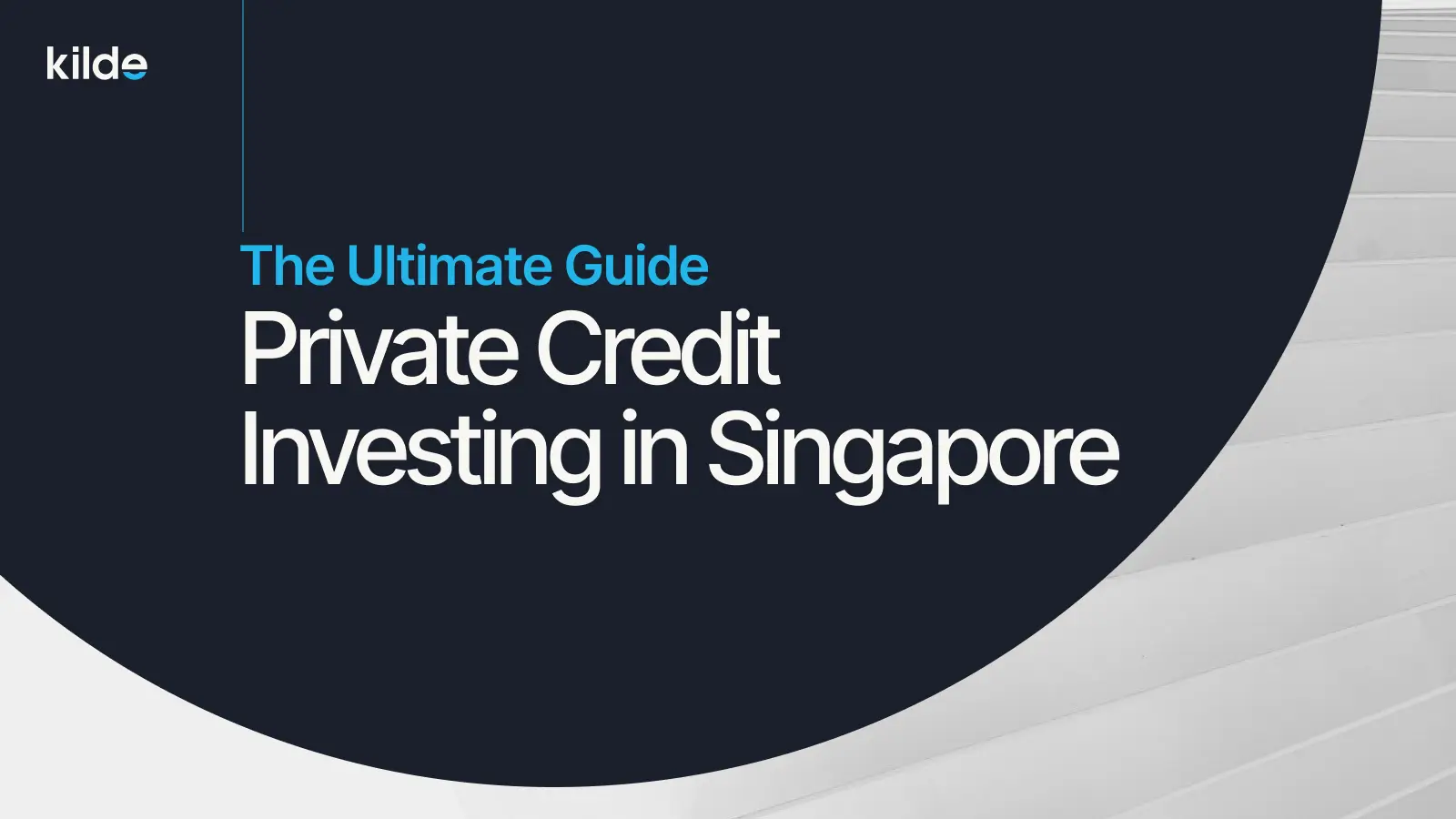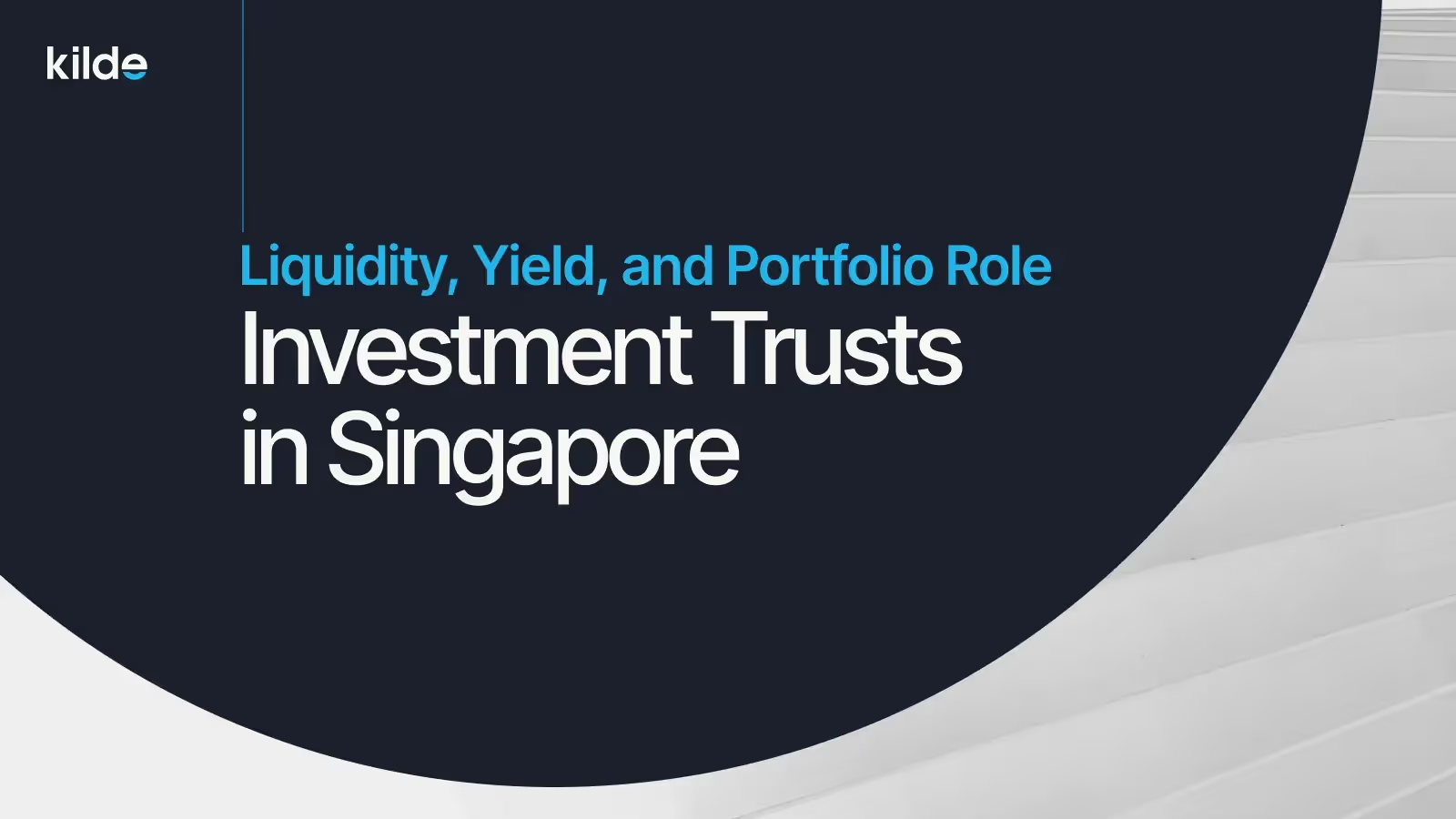We evaluated the effectiveness of three leading chatbots — ChatGPT o3 Deep Research (Pro), PerplexityPro Deep Research, and Grok Deeper Research (free) — in constructing investment portfolios.
Each chatbot was tasked with creating an income-generating portfolio for a 45-year-old accredited investor in Singapore with S$500,000, seeking stable income while limiting potential losses to under 20%.
The portfolio options were restricted to Singaporean banks, investment insurance products, and local wealth management platforms.
How We Evaluated the Portfolios
Our assessment combined professional wealth advisory best practices, emphasising:
- Yield and income stability
- Risk management (quantitative and qualitative)
- Diversification and allocation quality
- Currency and regulatory accuracy
- Suitability to the investor's life stage and stated objectives
ChatGPT
- Yield: Approximately 5.7% annually
- Strategy: Diversified across traditional banks, insurance income products, digital wealth platforms, private credit (Kilde), Singapore Savings Bonds, and REITs.
- Risk & Drawdown: Comprehensive stress-testing was provided, and a calculated drawdown was maintained below 15%.
- Assessment: Highly detailed and advisor-grade recommendation, though somewhat verbose. Lacks insights on CPF optimisation and estate planning.
PerplexityPro
- Yield: Estimated at around 6.0-6.5% annually
- Strategy: Core portfolio (~60-70%) with banks and income-focused digital platforms, enhanced yield investments (~20-30%) through alternative platforms (Kilde, Helicap), and a 10% cash buffer.
- Risk & Drawdown: Moderate qualitative risk commentary but lacked quantitative stress-testing.
- Assessment: Balanced portfolio but contains inaccuracies on product specifics (e.g., payout frequency and FX risk). Needs fine-tuning before practical implementation.
Grok
- Yield: Aggressive yield estimate at around 7-8% annually
- Strategy: Limited to four primary suggestions—fixed deposits, StashAway income portfolio, Kilde private credit, and ABF ETF.
- Risk & Drawdown: Minimal risk analysis and incorrect assumption about SGD-denominated private credit.
- Assessment: Narrowly focused, significantly underestimating currency risks and overall diversification. Aggressive yield expectations may exceed realistic drawdown limitations.
Aggressiveness Ranking & Realism Check
When comparing aggressiveness:
- Most Aggressive: Grok (7-8% yield, significantly underestimated risks)
- Balanced Approach: PerplexityPro (~6.0-6.5%, sensible risk-taking with minor factual errors)
- Most Conservative and Realistic: ChatGPT (5.7%, well-quantified risk controls)
The key red flags:
- Grok’s yield was notably ambitious, ignoring realistic currency depreciation risks (USD vs. SGD exposure).
- PerplexityPro showed moderate but correctable inaccuracies.
- ChatGPT maintained a conservative, risk-aware stance consistent with professional wealth advisory standards.
Detailed Comparison of each Bot
Our imaginary client is 45, lives and spends in Singapore dollars, wants regular income, and is adamant that the portfolio must never sink more than 20 %.
That is precisely the brief a licensed wealth-advisor receives in practice, so the three LLM answers were read through the same professional lens we would apply to any internal investment memo.
How each bot performed at a glance
What a human wealth-advisor would applaud
(✔ = strong, △ = partial, ✖ = missing)
Where the bots over-shared or under-delivered
The professional adviser’s missing final mile
Even ChatGPT stopped short of the four conversations a licensed adviser would still have before money is wired:
- Cash-flow mapping – match coupon timetable to the client’s monthly budget; if needed, create a REIT/bond ladder to smooth q-on-q peaks.
- Tax and CPF/SRS integration: Park the risk-free bucket in CPF-OA top-ups (4 % p.a., principal-guaranteed) before buying a 3 % cash fund.
- Insurance and contingency: Verify that liabilities (mortgage, education) are already covered so the portfolio need not be raided in a crisis.
- Execution costs and bid-ask: A 0.8 % brokerage round-trip on REITs can erase two-quarters of dividends; consider using institutional share classes.
Who performed best, and who was the last
The Overall Winner: ChatGPT o3
Considering completeness, risk management, realistic yield estimates, and practical applicability, ChatGPT’s recommendation stands out.
Its careful quantitative approach and comprehensive diversification align closely with professional wealth advisory standards, offering a robust model portfolio that is both conservative and realistic.
Runner-Up: PerplexityPro
On the other hand, PerplexityPro offered a slightly higher projected yield (6.0–6.5%) and a more intuitive allocation structure.
That said, it fell short in quantitative depth and included a few factual slips.
While it leaned more aggressive than ChatGPT, it stayed within a sensible range.
The framework it presented showed promise—and with refinement from a human advisor, could become a strong alternative worth considering.
Grok: A Limited View with Overconfidence
Grok's portfolio recommendation stood out — not for its depth but its narrow scope and overambitious yield projection.
While it suggested an appealing estimated return of 7-8% annually, this came at the cost of credibility.
The recommendation was limited to four instruments (FDs, StashAway, Kilde, ABF ETF), omitting critical asset classes such as REITs, insurance-linked products, and bonds that are core to any well-diversified income strategy.
The fact that we have been using a free tier may have impacted the results.
However, our conclusion is similar when Grok was tested against other LLMs in different fields.
Try It Yourself: Prompt Templates for Investment Portfolio Design
Ever wondered how these AI tools would handle your investment brief?
The templates below give you a practical way to experiment and see what kind of portfolio an AI might build.
- Lite Prompt (Quick Test): Short and straightforward — ideal if you just want to see what ChatGPT (or another AI assistant) can generate with minimal setup.
- Pro Prompt (Advisor-Grade): More comprehensive, closely following the structure we used in our experiment. It includes placeholders for income targets, drawdown limits, currencies, tax treatment, and other personal details, resulting in a much richer output.
Important: These templates are not financial advice. Treat them as a way to explore how AI thinks about portfolio construction — and, more importantly, to sharpen the questions you ask about your own investments. Any outputs should always be reviewed, refined, and validated with a licensed adviser before you act on them.
Lite Version (for quick use)
Build an income portfolio for {{AGE}} y/o in {{TAX_RESIDENCE_COUNTRY}}, base currency {{BASE_CURRENCY}}.
Capital {{AMOUNT}} aiming for net {{TARGET_INCOME_PER_MONTH}}/month, max drawdown {{MAX_DRAWDOWN_PERCENT}}%.
Constraints: {{ALLOWED_UNIVERSE}} only, credit ≥ {{CREDIT_FLOOR}}, FX outside base ≤ {{FX_TOLERANCE}}% (hedge ratio {{HEDGE_RATIO}}%).
Liquidity: need {{LIQUIDITY_NEED}} within {{DAYS}} days; fee budget {{FEE_BUDGET_BPS}} bps.
Output:
1) Two portfolios (Base & Conservative) with sleeve table (weight, tickers, yield, fees, 12‑mo income).
2) 12‑month cash‑flow calendar.
3) Stress drawdowns (2008, Mar‑2020, 2022, FX shock).
4) Rebalance & risk checks.
5) 5 failure modes + mitigations.
Flag assumptions; all numbers in {{BASE_CURRENCY}}.Pro Template — “Income Portfolio Builder (Advisor‑Grade)”
SYSTEM / ROLE
You are an investment co‑pilot trained to produce advisor‑grade income portfolios.
Act as a conservative, risk‑controlled allocator.
Prioritise factual accuracy, suitability, and capital preservation.
If a fact is uncertain, say so and propose a safe default; do not hallucinate.
Present concise reasoning and the necessary calculations only (no step‑by‑step chain‑of‑thought).
OBJECTIVE
Design an income‑generating portfolio that meets the mandate below, and present it in the Output Spec.
CLIENT PROFILE
- Age: {{AGE}}
- Household situation & dependents: {{HOUSEHOLD}}
- Country of residence (tax): {{TAX_RESIDENCE_COUNTRY}}
- Other tax jurisdictions (if any): {{OTHER_TAX_JURISDICTIONS}}
- Investor classification (e.g., retail / accredited / professional): {{INVESTOR_CLASSIFICATION}}
- Investment knowledge & experience (brief): {{KNOWLEDGE_LEVEL}}
- Primary base currency: {{BASE_CURRENCY}} (all outputs in {{BASE_CURRENCY}})
- Custodians/brokers/platforms available + fee schedule: {{PLATFORMS_AND_FEES}}
- Execution constraints (min lot sizes, trading hours, settlement, account types available): {{EXEC_CONSTRAINTS}}
BALANCE SHEET SNAPSHOT
- Liquid investable assets for this mandate: {{AMOUNT}}
- Existing asset allocation (by sleeve %): {{EXISTING_ALLOCATION}}
- Other key assets (property, private equity, RSUs, business): {{OTHER_ASSETS}}
- Liabilities (type, rate, amortization, covenants): {{LIABILITIES}}
- Emergency fund available (months of expenses): {{EMERGENCY_BUFFER_MONTHS}}
- Insurance coverage (life/health/disability/critical illness): {{INSURANCE_STATUS}}
INCOME MANDATE
- Target *net* monthly income in {{BASE_CURRENCY}}: {{TARGET_INCOME_PER_MONTH}}
- Income start date + horizon (e.g., start now / start in {{YEARS}} years; invest for {{HORIZON}} years): {{INCOME_TIMING}}
- Minimum liquidity requirement (cash you must be able to access within {{DAYS}} days): {{LIQUIDITY_NEED}}
- Drawdown constraint: maximum peak‑to‑trough portfolio loss {{MAX_DRAWDOWN_PERCENT}}%
- Volatility comfort (annualised, optional): {{MAX_VOL_PERCENT}}%
- Income stability preference (choose one): {{STEADY / OK_WITH_VARIANCE}}
- Reinvestment policy (DRIP vs cash sweep): {{REINVESTMENT_POLICY}}
RISK & POLICY CONSTRAINTS
- Prohibited instruments/sectors: {{PROHIBITED}}
- Allowed instruments/universe (tickers or categories; e.g., IG bonds, term deposits, SSBs/T‑bills, REITs, bond ETFs, dividend stocks, private credit funds, annuities, money market funds): {{ALLOWED_UNIVERSE}}
- Credit quality floor (e.g., ≥ BBB‑ for public credit): {{CREDIT_FLOOR}}
- Duration preference (e.g., barbell/ladder/max effective duration): {{DURATION_POLICY}}
- Position limits (max per issuer {{MAX_ISSUER}}%, per asset class {{MAX_CLASS}}%, per country {{MAX_COUNTRY}}%): {{POSITION_LIMITS}}
- Currency policy: target FX exposure outside {{BASE_CURRENCY}} ≤ {{FX_TOLERANCE}}% with hedge ratio target {{HEDGE_RATIO}}%
- Fee budget (all‑in ongoing cost target, bps): {{FEE_BUDGET_BPS}}
- ESG/values constraints (optional): {{ESG_POLICY}}
TAX & WRAPPERS
- Tax regime notes (withholding on dividends/interest, PFIC/UCITS rules, estate tax exposure): {{TAX_NOTES}}
- Wrappers available (e.g., CPF/SRS/ISA/IRA/401(k)/super): {{WRAPPERS}}
- Wrapper priorities (what to fund first and why): {{WRAPPER_PRIORITY}}
OUTPUT SPEC (STRICT—do not omit sections)
1) Executive Summary (≤150 words): objective, expected net yield, expected/95% stress drawdown, why this mix suits the constraints.
2) Portfolio by Sleeve (table):
Columns: Sleeve | Target % | Vehicles (Ticker/ISIN) | Currency | Distribution Freq | Forward Yield (%) | Total Exp. Ratio (bps) | Est. 12‑mo Income ({{BASE_CURRENCY}}) | Rationale.
- Provide 2 variants: Base Case and Conservative Case (lower drawdown).
3) Cash‑Flow Schedule (table):
- 12‑month forward distribution calendar in {{BASE_CURRENCY}} with month‑by‑month totals; show worst‑month and average.
4) Risk & Stress Tests:
- Show portfolio‑level: weighted duration, effective duration, WACR (weighted average credit rating), % sub‑IG exposure, % illiquid.
- Scenario drawdowns using reasonable proxies: 2008 GFC, Mar‑2020, 2022 rate shock, and a {{BASE_CURRENCY}} −{{FX_SHOCK}}% FX shock applied to unhedged sleeves. State proxies used.
5) Liquidity & Execution:
- Typical bid‑ask/ADV for each vehicle; days to exit {{%}} of portfolio under normal conditions; note any gates/lockups.
- Phasing plan for deployment (e.g., 3 tranches over {{WEEKS}} weeks) to reduce timing risk.
6) Fee & Tax Drag:
- Sum ongoing costs (bps) + brokerage/platform fees; show annual {{BASE_CURRENCY}} impact and % of income.
- Tax notes per sleeve (withholding/credits; wrapper recommendations to improve net).
7) Governance:
- Rebalance policy (frequency and drift bands), ongoing checks (credit downgrades, payout cuts, yield traps), kill‑switches (breach of {{MAX_DRAWDOWN_PERCENT}}% or income cut >{{INCOME_CUT_THRESHOLD}}%).
8) Red Team:
- List 5 realistic failure modes (e.g., credit cycle, funding stress, dividend cuts, duration spike, FX move) and one mitigation each.
9) Assumptions & Sources:
- List all key assumptions. If browsing tools are available, verify yields/fees/payout policies and cite official sources; otherwise label as “Assumption—verify”.
VALIDATION BEFORE OUTPUT
- Summarise any missing critical inputs. If anything is missing, make conservative defaults, flag them in “Assumptions”, and proceed.
TONE & FORMAT
- Be concise, numeric, and practical. Use tables for sleeves and cash‑flows.
- All amounts in {{BASE_CURRENCY}}; show percentages to one decimal place.
- Avoid product marketing language.
- Final line: one‑sentence “If this, then that” rule for the next 12 months.
BEGIN.Notes to get the best result
Here are some simple tweaks that make the prompts much more reliable in practice.
- Pick a universe. If you want to keep the model from suggesting unsuitable stuff, define
{{ALLOWED_UNIVERSE}}tightly (e.g., “SGD cash/MMF, SSBs/T‑bills, SGD IG bond ETFs, S‑REITs, global IG hedged to {{BASE_CURRENCY}}, no single stocks, no leverage, no crypto, no private funds”). - Force the cash‑flow table. Most models skip this unless you explicitly require a 12‑month distribution calendar.
- Make FX explicit. Specify
{{FX_TOLERANCE}}and{{HEDGE_RATIO}}—otherwise you’ll get stealth USD risk. - Cap concentration. Use
{{MAX_ISSUER}}/{{MAX_CLASS}}limits to avoid yield chasing. - Ask for two variants. A Base and a more Conservative version help you compare yield vs. risk quickly.
- Verification. If the model can browse, it should cite sources for yields/fees; if not, tell it to label items as assumptions for later verification.
Conclusion
LLMs can already draft an excellent first cut.
But the gap between smart content and regulated advice lies in the details: factual precision (currency, tax), tailoring to personal cash flow, and integration with the rest of the balance sheet.
Use the bots for ideation; let a licensed adviser refine, verify, and, crucially, put her name on the recommendation.
ChatGPT emerged as the most comprehensive and professional AI recommendation.
However, investors should regard AI suggestions as starting points rather than end solutions, consulting licensed financial advisors to refine, validate, and fully integrate these strategies into a holistic personal finance plan.
Note: Always consult a licensed financial advisor before implementing investment strategies.
Disclaimer Notice
This page is provided for general informational purposes only and does not constitute legal, financial, or investment advice. Please refer to our Full Disclaimer for important details regarding eligibility, risks, and the limited scope of our services.






.avif)








